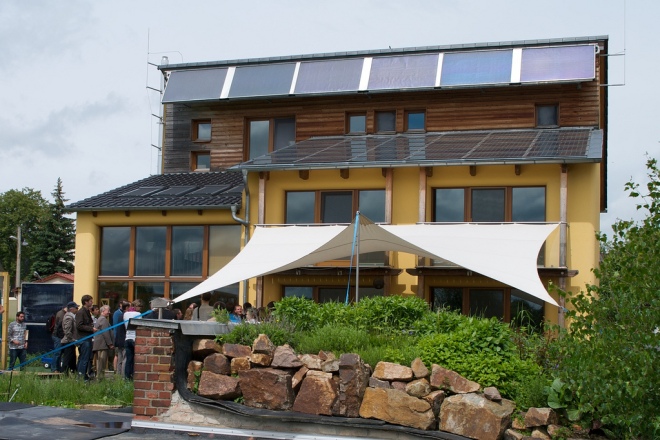Utility revenue decoupling is often seen as an enabling policy supporting “demand side management” (DSM) programs. DSM is a catch-all term for the things you can do behind the meter that reduce the amount of energy (kWh) a utility needs to produce or the amount of capacity (kW) it needs to have available. DSM includes investments improving the energy efficiency of buildings and their heating and cooling systems, lighting, and appliances. It can also include “demand response” (DR) which is a dispatchable decline in energy consumption — like the ability of a utility to ask every Walmart in New England to turn down their lights or air conditioning at the same time on a moment’s notice — in order to avoid needing to build seldom used peaking power plants.
For reasons that will be obvious if you’ve read our previous posts on revenue decoupling, getting utilities to invest in these kinds of measures can be challenging, so long as their revenues are directly tied to the amount of electricity they sell. Revenue decoupling can fix that problem. However, reducing customer demand for energy on a larger scale, especially during times of peak demand, can seriously detract from the utility’s ability to deploy capital (on which they earn a return) for the construction of additional generating capacity. That conflict of interests is harder to address.
But it’s worth working on, because as we’ll see below, DSM is cheap and very low risk — it’s great for rate payers, and it’s great for the economy as a whole. It can reduce our economic sensitivity to volatile fuel prices, and often shifts investment away from low-value environmentally damaging commodities like natural gas and coal, toward skilled labor and high performance building systems and industrial components.
The rest of this post is based on the testimony that Clean Energy Action prepared for Xcel Energy’s 14AL-0660E rate case proceeding, before revenue decoupling was split off. Much of it applies specifically to Xcel in Colorado. However, the overall issues addressed are applicable in many traditional regulated, vertically integrated monopoly utility settings.
Why can’t we scale up DSM?
There are several barriers to Xcel profitably and cost-effectively scaling up their current DSM programs. Removing these impediments is necessary if DSM is to realize its full potential for reducing GHG emissions from Colorado’s electricity sector. Revenue decoupling can address some, but not all of them.
- There are the lost revenues from energy saved, which impacts the utility’s fixed cost recovery. If the incentive payment that they earn by meeting DSM targets is too small to compensate for those lost revenues, then the net financial impact of investing in DSM is still negative — i.e. the utility will see investing in DSM as a losing proposition. Xcel currently gets a “disincentive offset” to make up for lost revenues, but they say that this doesn’t entirely offset their lost revenues.
- Even if the performance incentive is big enough to make DSM an attractive investment, the PUC currently caps the incentive at $30M per year (including the $5M “disincentive offset”), meaning that even if there’s a larger pool of cost-effective energy efficiency measures to invest in, the utility has no reason to go above and beyond and save more energy once they’ve maxed out the incentive.
- If this cap were removed, the utility would still have a finite approved DSM budget. With an unlimited performance incentive and a finite DSM budget, the utility would have an incentive to buy as much efficiency as possible, within their approved budget, which would encourage cost-effectiveness, but wouldn’t necessarily mean all the available cost-effective DSM was being acquired.
- Given that the utility has an annual obligation under the current DSM legislation to save a particular amount of energy (400 GWh), they have an incentive to “bank” some opportunities, and save them for later, lest they make it more difficult for themselves to satisfy their regulatory mandate in later years by buying all the easy stuff up front.
- It is of course the possible that beyond a certain point there simply aren’t any more scalable, cost-effective efficiency investments to be made.
- Finally and most seriously, declining electricity demand would pose a threat to the “used and useful” status of existing generation assets and to the utility’s future capital investment program, which is how they make basically all of their money right now.
Revenue decoupling can play an important role in overcoming some, but not all, of these limitations. With decoupling in place, we’d expect that the utility would be willing and able to earn the entire $30M performance incentive (which they have yet to do in any year) so long as it didn’t make regulatory compliance in future years more challenging by prematurely exhausting some of the easy DSM opportunities.
Continue reading Decoupling & Demand Side Management in Colorado
